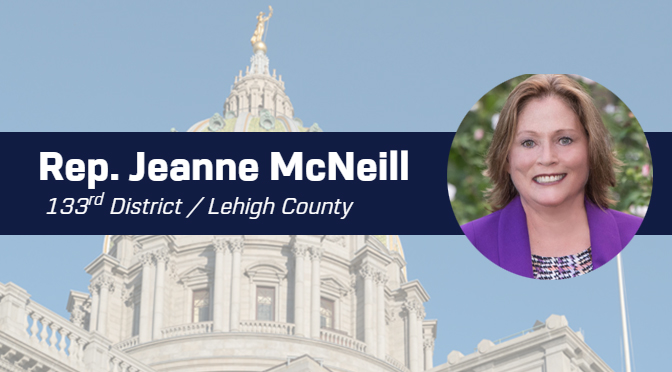The Reality of Pennsylvania’s Transportation Funding
by Jeanne McNeill
Pennsylvania’s transportation policy touches every facet of our lives. From the roads, bridges, rails, ships and planes we ride on to the packages we pick up on our porch, transportation policy created at the federal, state and local levels is ever-present.
For the past month, the House Transportation Committee held meetings across the state trying to find common ground. We listened to officials from various public transit agencies in Reading, Wilkes Barre, Harrisburg and Pittsburgh. Each testifier echoed the various ways that public transit affects each region of Pennsylvania, because all 67 counties in Pennsylvania rely on some form of public transportation, from rural areas to bustling cities.
The only way we can generate solutions for our transportation problems and elevate Pennsylvania’s reputation as a leader in transportation is to reach across the political aisle and work together to have these important conversations with leading industry experts.
But we were not just talking about roads and bridges. This series of public meetings focused on all aspects of transportation. We also talked about how to properly fund our infrastructure, workforce and public transit, which has a major impact on Pennsylvania’s economic growth.
Act 89 of 2013 marked the last time the legislature attempted to address transportation funding. It’s time to address it again.
To put it into perspective, according to the Pennsylvania Public Transportation Association, our public transportation system employs more than 39,000 people and generates more than $5.4 billion annually for our economy. In 2022, there were 232 million bus trips, which helped nearly 24 million seniors travel to medical appointments and other important trips.
Aside from the massive economic impact of public transit throughout Pennsylvania, for many it serves as a lifeline and connection to their community. Hundreds of thousands of people including seniors, working adults, people who can’t afford a car, and people with disabilities rely on it to get to and from work or school, shopping or appointments. Many times, these groups, especially seniors, wouldn’t be able to get to important medical appointments without a bus to take them.
These massive numbers emphasize the impact that public transit has on local economies and the enormity of its impact on the state’s gross domestic product.
If we don’t come together and fix these issues today, the fiscal cliff our transportation sector is experiencing will take our economy down with it.
State Rep. Jeanne McNeill is chair of the House Children and Youth Committee and the former chair of the Northeast Delegation.





